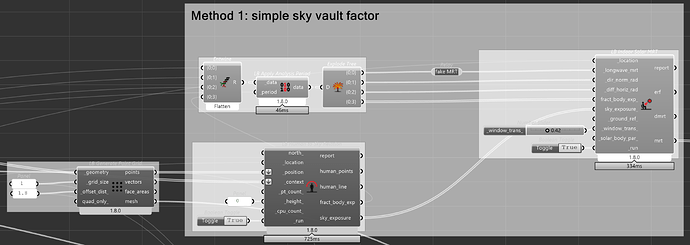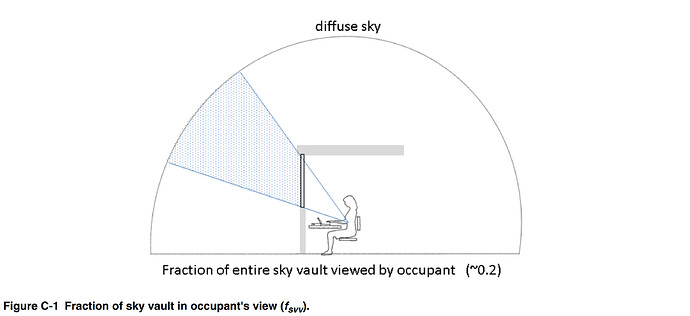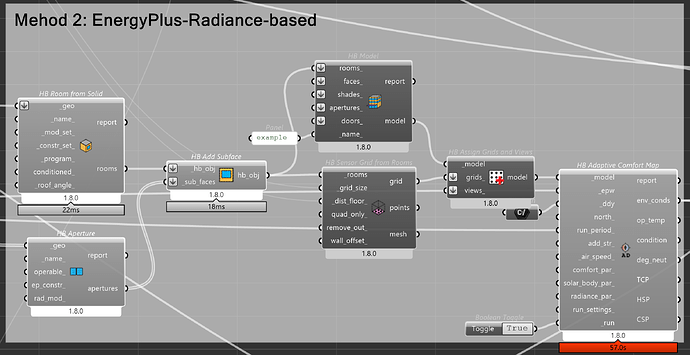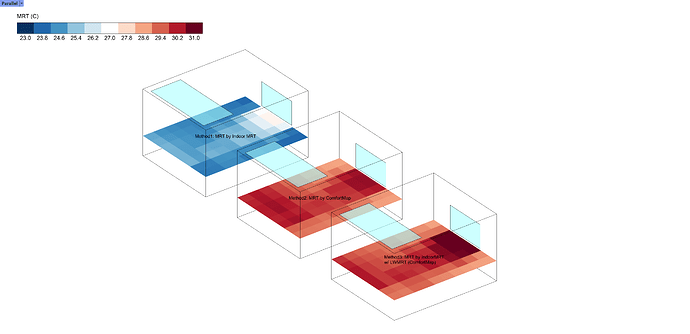Hi @Savannah,
In general, there are two methods to achieve this in LBT.
If you already have the long-wave MRT data and are working with a single type of glazing (one SHGC value), then i guess you can directly go with Method 1. However, if you don’t have the long-wave MRT or need to account for multiple glazing types (different SHGC values), then Method 2 is the better choice.
Method 1:
The first method is to use the IndoorMRT component with a sky vault (HumanToSkyRelation) to assess the sky exposure on specific points, as shown below:
This method takes into account the sky fraction, as explained in ASHRAE 55. It calculates the spatial relationship between the points and the sky, considering the context that blocks the sky.
However, there are some constraints to be aware of:
1 - You cannot assign different SHGC values to different glazings. The input
_window_trans in the
IndoorMRT component allows you to define the SHGC of the glazings without assigning them to specific objects. It presumably considers some reductions by the SHGC in the calculation (similar to
Tsol in ASHRAE 55).
2 - You need a set of long-wave MRT values to ensure accuracy.
Therefore, I would recommend the second method, which is to use the Comfort Map in Honeybee Energy.
Method 2:
The Adaptive Comfort Map is one of the comfort models available, as shown below:
This method offers higher accuracy due to the 2-phase Radiance calculation. It can compute the indoor long-wave MRT since it is based on an energy model via EnergyPlus, and you can modify your glazing properties to see how the glazing design influences the MRT.
I tried using the long-wave MRT from this method and plugged it into the IndoorMRT component to compare the results (as the Method 3 below). Here is the comparison for your reference:
n.b.: The first result was calculated using fake long-wave MRT (outdoor dry-bulb temperature). This was done to demonstrate that if your long-wave MRT data is missing, it can lead to significant inaccuracies.
and have fun 
MRT example.gh (126.7 KB)
Regards,
Beiyu





